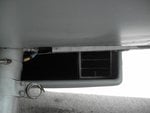wuzak
Captain
[QUOTE="MIflyer, post: 1392532, member: 42472]From a mechanical engineering standpoint it would have been child's play to add a 2nd speed to the V-1710's single stage supercharger. Given that the V-1710 was built in an automotive fashion, with engine block, gearcase, and accessory section as separate section it would have far easier than with the one-piece Merlin engine case and need not interrupt production. If required they could have gotten Continental or Maytag Washing Machines or some other company to build the new 2 speed section. Going the next step to a two stage two speed supercharger would have been more challenging, but well within their capabilities. As it was, Packard redesigned the Merlin supercharger for easier production and had Wright redesign the impeller. [/QUOTE]
Wright did not redesign the impeller of the Merlin. They produced the 2 speed dive for Packard Merlins, which was an epicyclic type, rather than the Farman type used by Rolls-Royce. The fact that Rolls-Royce used the Farman gearbox under licence may have had something to do with it.
Don't know that Packard did any significant redesign of the supercharger, to ease production or otherwise.
Packard Merlins retained the same ratings as their British equivalent, the 2 speed drives more or less had the same gear ratios as the Rolls-Royce equivalent.
Packard Merlins were 3 piece designs. There was the crankcase, the cylinder blocks and the cylinder heads. This was developed by Rolls-Royce as their single block head design was difficult to seal. Packard went into production with the separate head design from the outset. Packard developed their own method of sealing between the head and the block, but later changed to be the same as Rolls-Royce.
Merlins weren't designed to be as modular as the V-1710 was, that is true, so changing required some redesign of the crankcase.
Wright did not redesign the impeller of the Merlin. They produced the 2 speed dive for Packard Merlins, which was an epicyclic type, rather than the Farman type used by Rolls-Royce. The fact that Rolls-Royce used the Farman gearbox under licence may have had something to do with it.
Don't know that Packard did any significant redesign of the supercharger, to ease production or otherwise.
Packard Merlins retained the same ratings as their British equivalent, the 2 speed drives more or less had the same gear ratios as the Rolls-Royce equivalent.
Packard Merlins were 3 piece designs. There was the crankcase, the cylinder blocks and the cylinder heads. This was developed by Rolls-Royce as their single block head design was difficult to seal. Packard went into production with the separate head design from the outset. Packard developed their own method of sealing between the head and the block, but later changed to be the same as Rolls-Royce.
Merlins weren't designed to be as modular as the V-1710 was, that is true, so changing required some redesign of the crankcase.

